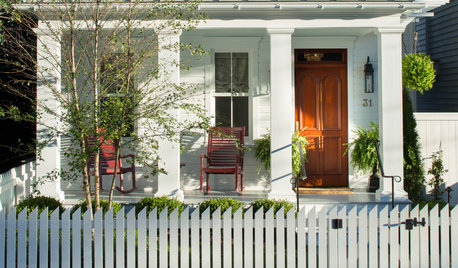Maryland Newbie looking for help :)
divamum
19 years ago
Related Stories

KITCHEN OF THE WEEKKitchen of the Week: Cooking With Creekside Views in Maryland
Thanks to a major addition, this kitchen packs in function and looks out to a beautiful vista
Full Story
HOUZZ TOURSMy Houzz: Art and Fashion Inspire in a Maryland Family Home
White walls provide a clean backdrop for a downtown home infused with art, pattern and fashion
Full Story
CONTEMPORARY HOMESHouzz Tour: Modern Maryland Retreat Gets Cozy
A sleek glass and metal weekend home gains warmth from wood detailing and vintage finds
Full Story
HOUZZ TOURSMy Houzz: Vintage Charm and DIY Style in Maryland
A Cape Cod-style family home overflows with hand-painted pieces and personalized style
Full Story
ARCHITECTUREHouse-Hunting Help: If You Could Pick Your Home Style ...
Love an open layout? Steer clear of Victorians. Hate stairs? Sidle up to a ranch. Whatever home you're looking for, this guide can help
Full Story
COLORPick-a-Paint Help: 11 Ways to Mine Your World for Colors
Color, color everywhere. Discover the paint palettes that are there for the taking in nature, shops and anywhere else you roam
Full Story
SELLING YOUR HOUSE10 Low-Cost Tweaks to Help Your Home Sell
Put these inexpensive but invaluable fixes on your to-do list before you put your home on the market
Full Story
MOVINGRelocating Help: 8 Tips for a Happier Long-Distance Move
Trash bags, houseplants and a good cry all have their role when it comes to this major life change
Full Story
TRADITIONAL HOMESHouzz Tour: Historic Charm Restored to a Dilapidated Coastal Home
Along the waterfront in Annapolis, Maryland, a couple gain space but preserve their 1800s home’s period looks
Full Story
DECORATING GUIDESRoom of the Day: Lighter Look for a Townhouse Great Room
Built-in cabinets consolidate media equipment and collectibles. Beach-cottage-style touches create a relaxing vibe
Full StorySponsored






lrobins
divamumOriginal Author
Related Professionals
Dunwoody Landscape Contractors · East Patchogue Landscape Contractors · Eustis Landscape Contractors · Merced Landscape Contractors · Paterson Landscape Contractors · Point Pleasant Landscape Contractors · Rancho Santa Margarita Landscape Contractors · Santa Maria Landscape Contractors · Vineyard Landscape Contractors · Wilton Landscape Contractors · Fairfax Siding & Exteriors · Framingham Siding & Exteriors · Levittown Siding & Exteriors · Poway Siding & Exteriors · St. Louis Siding & ExteriorsdivamumOriginal Author
lynnt
julia3
chrismd
vladpup
divamumOriginal Author
amanda_m
alfie_md6
chrismd
divamumOriginal Author
cfmuehling
nycefarm_gw
Brent_In_NoVA
cfmuehling
gardenpaws_VA
Brent_In_NoVA